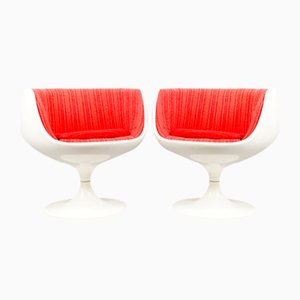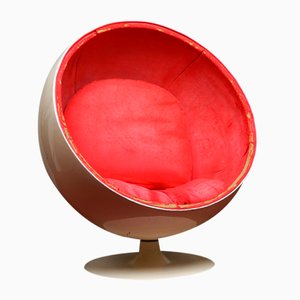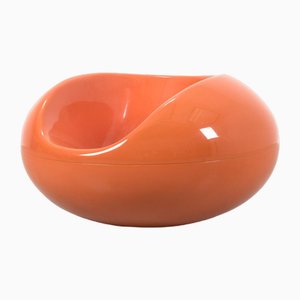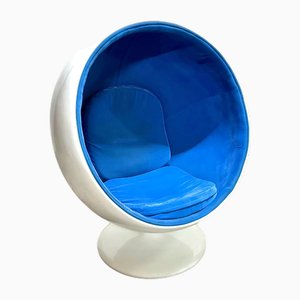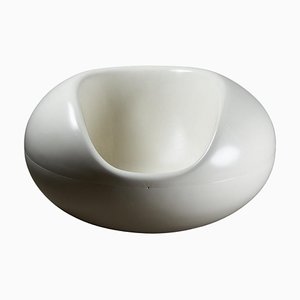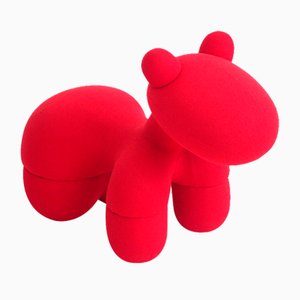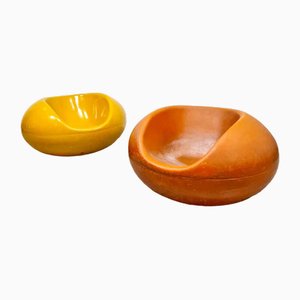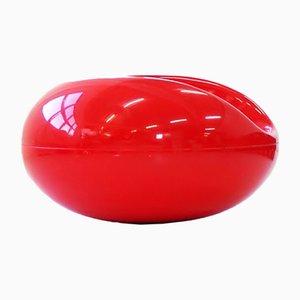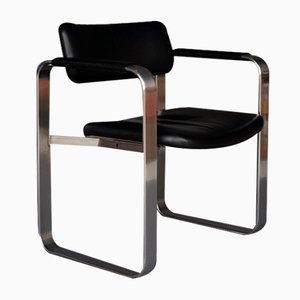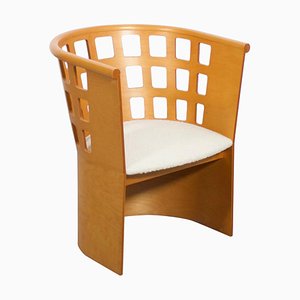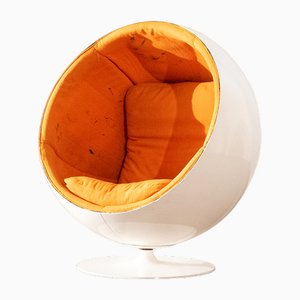
Born in Helsinki in 1932, Finnish designer Eero Aarnio studied interior and industrial design at the School of Applied Arts in his hometown between 1954 and 1957. Soon after graduating, he began to work for Finnish designer Ilmari Tapiovaara (1914-1999), who at that time was designing for furniture manufacturing brand Asko. By 1962, Aarnio had launched his own studio in Helsinki and developed his own ongoing relationship with Asko. Around the same time, he began to experiment with plastics—the material for which he would become famous.
In 1963, Aarnio’s interest in the potential of fiberglass-reinforced plastics led to the creation of his iconic Ball Chair—also known as the Globe Chair—which he later exhibited at the 1966 Cologne Furniture Fair to great acclaim. Asko, recognizing the marketing value of the chair’s Pop aesthetic, invited Aarnio to develop more boundary-pushing designs in plastic. Aarnio didn’t disappoint, following up his first success with pieces like the Pastil Chair or Gyro Chair (1967), Bubble Chair (1968), and Tomato Chair (1971). In the process, Aarnio’s work would help to expand the international view of Scandinavian design beyond its roots in natural materials and minimalist forms.
Through his long career, Aarnio remained committed to using innovative techniques in the creation of ergonomic and eye-catching designs. Additional works in his oeuvre include the Mushroom (1960), V.S.O.P. Cognac Lounge Chairs (1966), Kanttarelli Tables (1966), U-022 Stackable Chair (1972), Pony/Mustang Chair (1973), Copacabana Table (1991), Formula Chair (1998), and Parabel Dining Table (2002).
Aarnio’s work has often been used in set designs for films, music videos, and fashion shoots. The Ball Chair, for instance, has been featured in The Prisoner (1967), Moon Zero Two (1969), Dazed and Confused (1993), Mars Attacks (1996), Austin Powers (1997), Men in Black (1997), and Zoolander (2001), among others. Aarnio has won several awards, like the Kaj Franck Design Prize in 2008, and his work can be found in museums around the world, including LACMA, SF MoMA, the Brooklyn Museum and MoMA in New York, the V&A in London, the Pompidou and Musée des Arts Décoratifs in Paris, Die Neue Sammlung in Münich, the Stedelijk Museum in Amsterdam, and the Design Museum Helsinki—which is hosting an Aarnio retrospective in 2016.
He is still practicing from his studio in Helskinki today.
* All images courtesy of Eero Aarnio Studio

